Blackberry Creek as it courses through Bliss Woods:
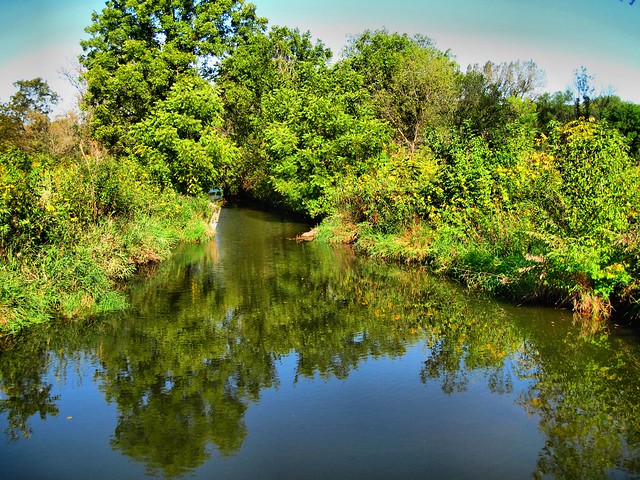
Woodland path in Hannford Woods:
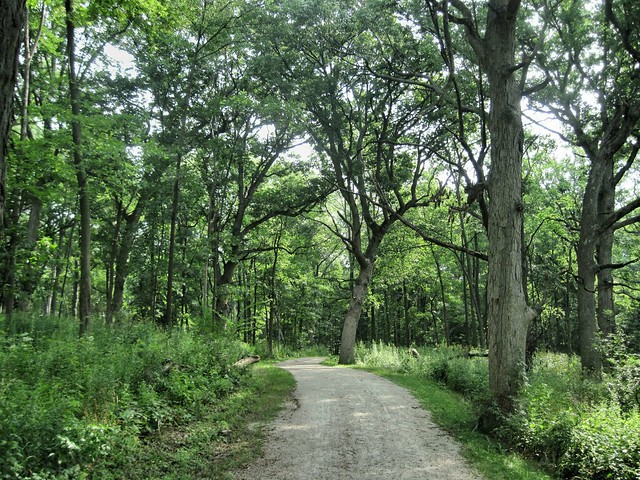
This barn, surrounded by a white rail fence, is on private property just across from the entrance to Hannaford Woods:
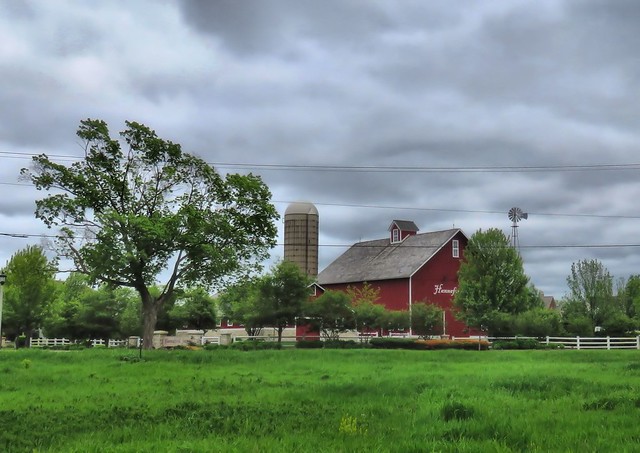
We visited the preserves several times before returning to Florida on May 24. On the first visit to Bliss Woods we obtained only distant views of a Scarlet Tanager, one of our favorite birds. Two days before returning to Florida we tried one last time. The morning started out windy and quite chilly at 46 degrees F (7.8 degrees Celsius). The tree limbs were moving so much that we held little hope of seeing many birds at all. Some of those which took flight actually flew backwards!
A male Northern Flicker was not affected by the wind as he searched for ants on the mowed lawn in the picnic area:
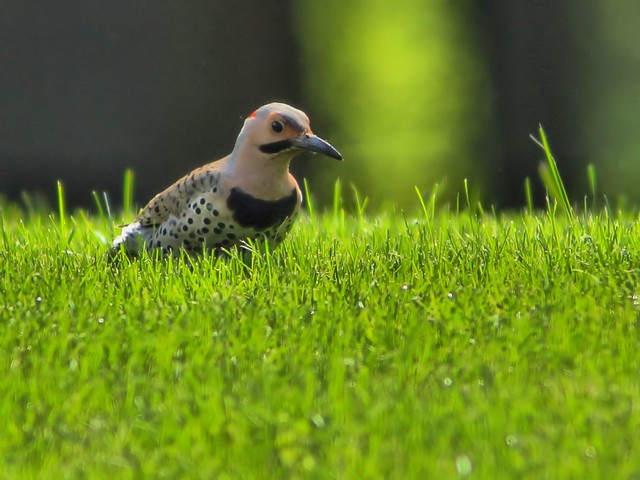
The winds subsided and the skies brightened, though the temperature dropped a couple of degrees. Yellow Warblers were already gathering nesting materials. This one sang in a small tree on its territory:
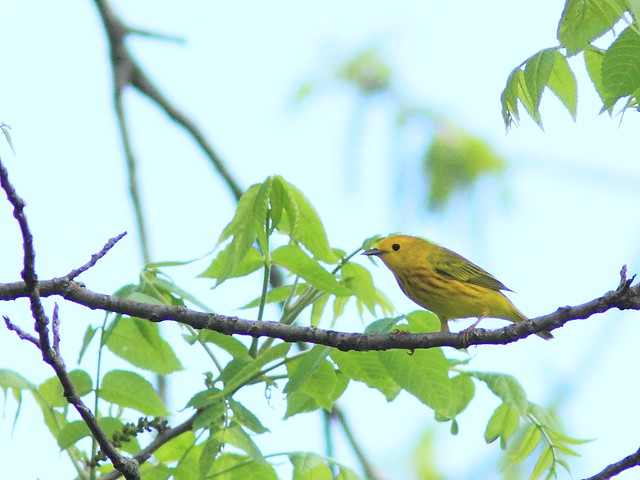
American Goldfinches bounded about, carefree, as they will not breed until later in the season:
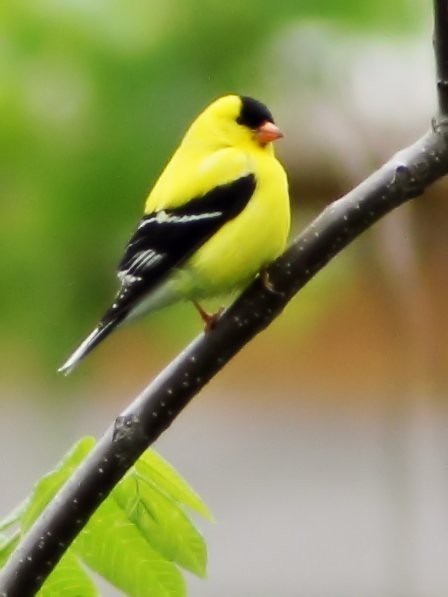
Indigo Buntings had arrived en masse:
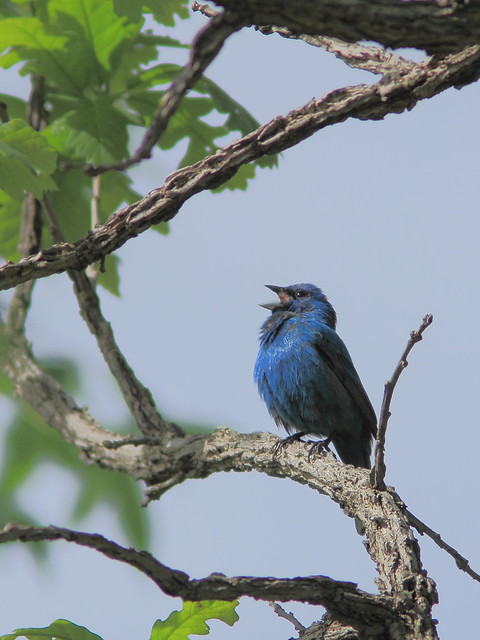
A White-breasted Nuthatch seemed to be exploring a nest hole. It kept poking its head in but never entered. I wondered if it might be occupied by another creature such as a squirrel or chipmunk:
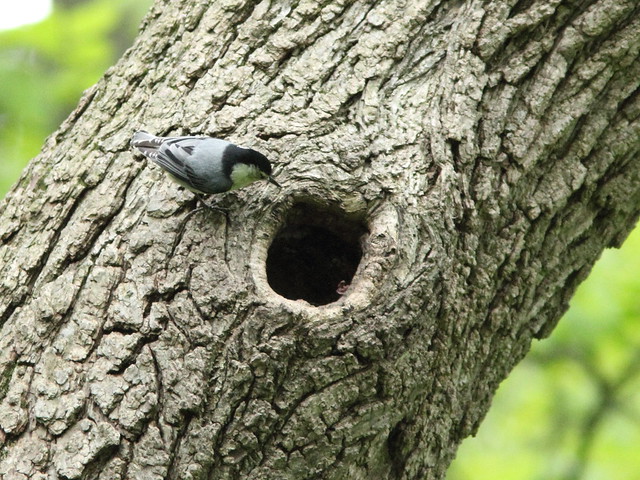
High in a nearby oak tree, I spotted a White-breasted Nuthatch fledgling:
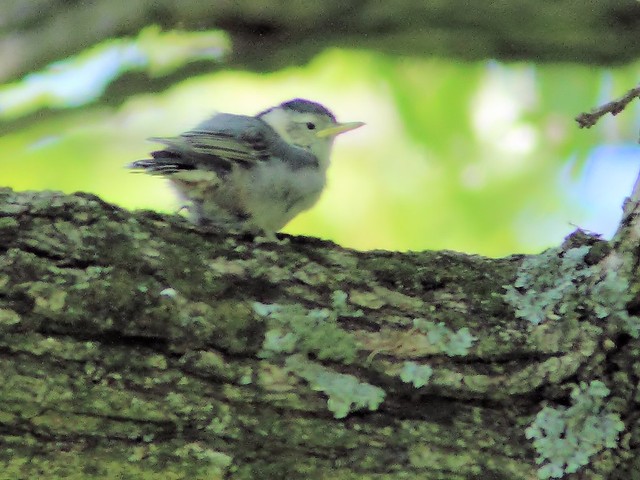
As a parent approached with a grub, it started begging silently:
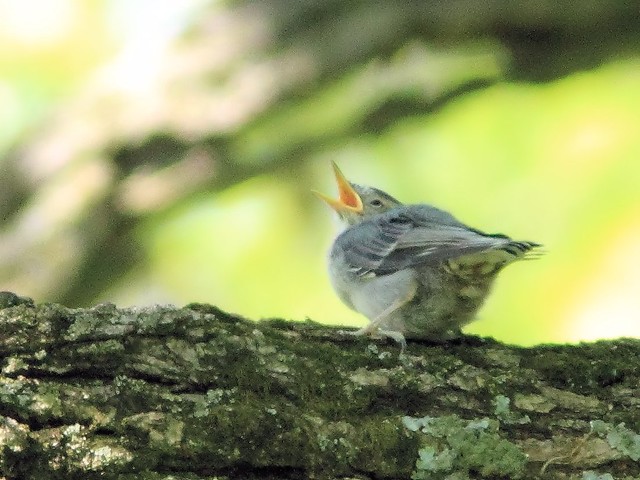
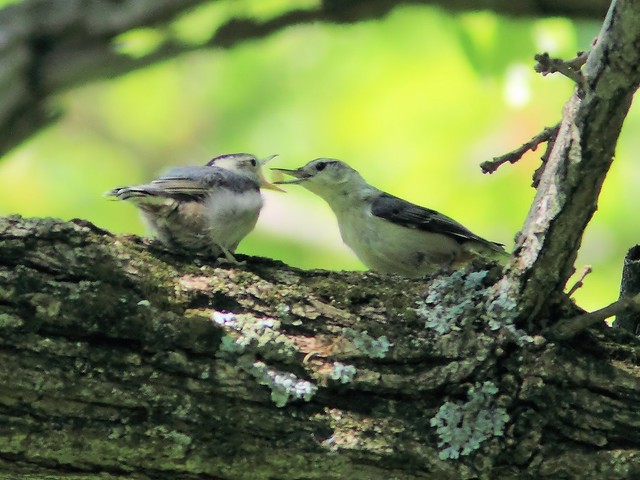
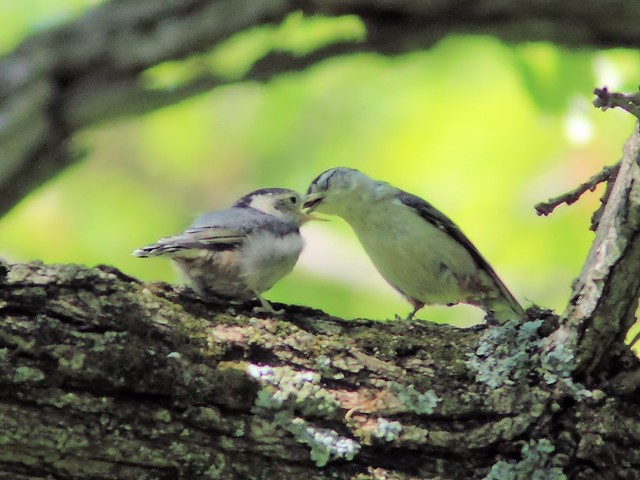
"I still want more!"
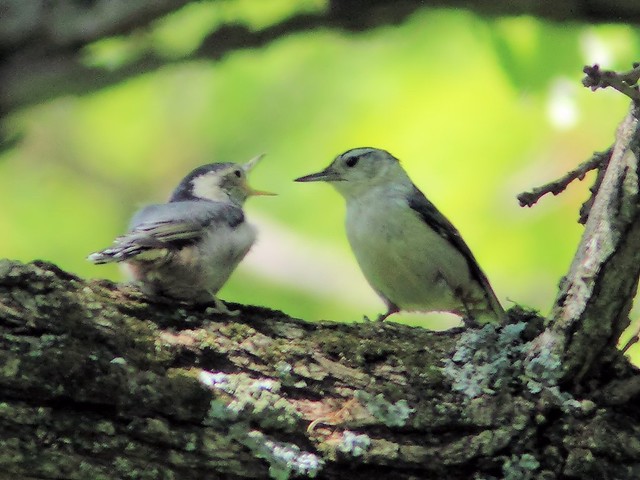
This first year male Orchard Oriole was the second we saw this week:
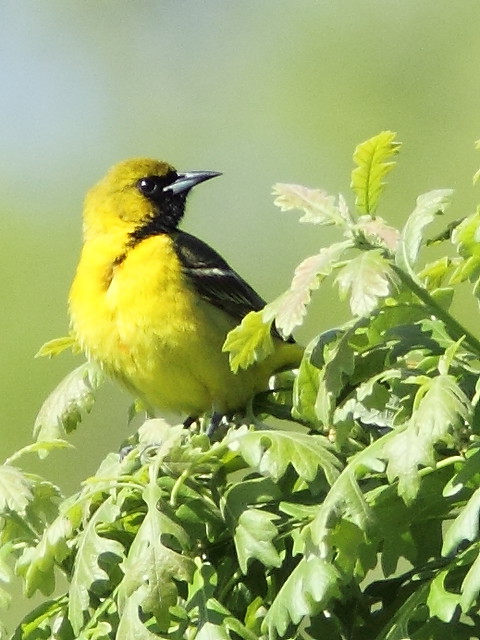
A male Orchard Oriole in full breeding plumage flew by but I was unable to get a photo, so here is one from May 14 a year ago. It is smaller than a Baltimore Oriole and has brick-red plumage rather than bright orange of the latter species:
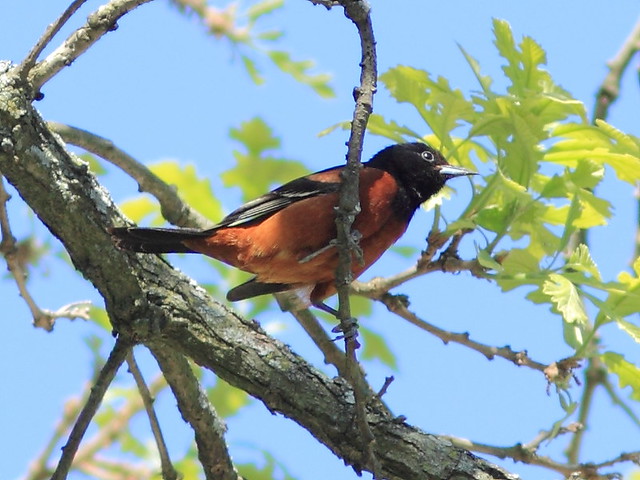
A Red-tailed Hawk swooped in low. Not a threat to small birds, it was probably hoping to surprise a rabbit or squirrel:
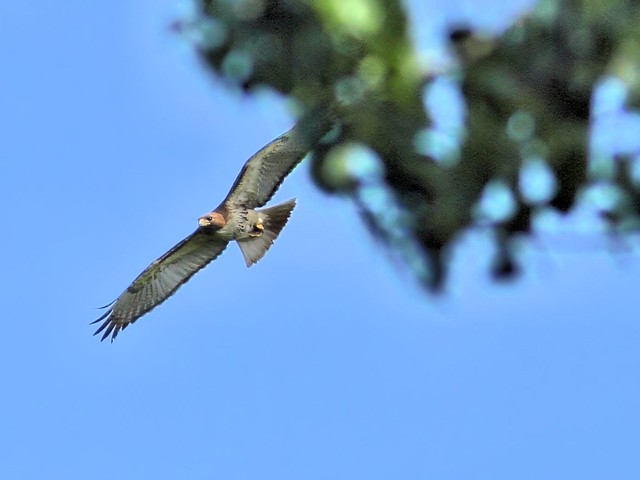
We have been watching a pair of Blue-gray Gnatcatcher build a nest which straddles a low-hanging limb of an old oak. Now the bird is sitting tight, surely incubating its eggs. We were pleasantly surprised to see that the fragile-looking nest had not been disrupted by the high winds and rain:
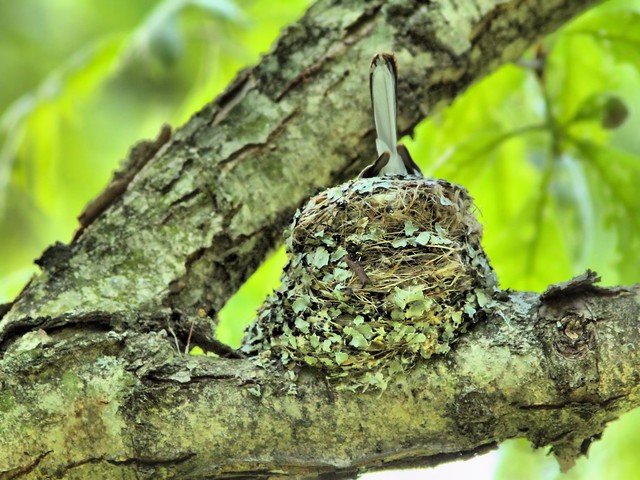
Finally, we were rewarded when a male Scarlet Tanager suddenly flew into full sun in a tree just above the trail:
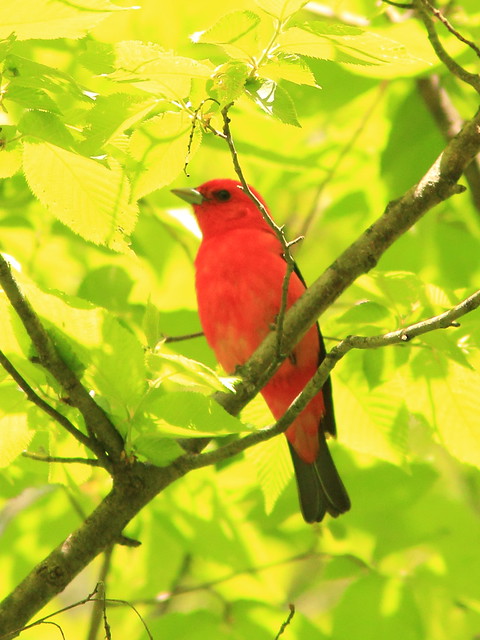
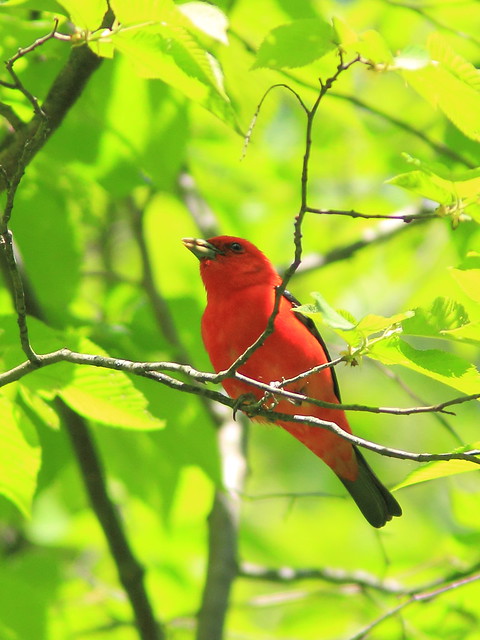
His coat is deeply scarlet except for black wings and tail. The sun was high and the leaves cast strong dappled shadows. Nearly all of my dozen photos were spoiled because of the sharp contrasting patches of light. This one better illustrates the problem, as the red color (and the green on the leaves) is washed out in the highlights:
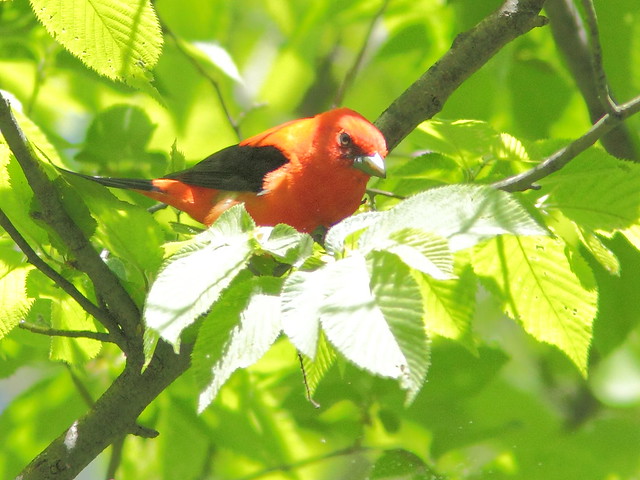
Speaking of highlights, my final visit to Hannaford Woods produced a Life Bird! This does not happen very often these days, as I have lost interest in chasing after target birds. While walking the trail I heard a very loud warbler song coming from close to the ground nearby. I simply could not identify the song and tried to find the bird for the better part of half an hour. The understory was so dense and it was so tantalizingly close by!
Before continuing down the trail, I recorded the song on my iPhone, hoping to research it and identify the singer. On the way back I replayed the song and the bird responded immediately. I caught a glimpse of it, singing a few inches off the ground. It had a brown back and a distinct eye ring, but it flew off in less than a second. It continued to sing in the distance, but to my surprise a second bird appeared and sat still long enough for me to capture a 25 second burst of images before it flew off. My photos confirmed that it was a Connecticut Warbler, the first I had ever seen, and the first County record this spring.
This seclusive but not rare warbler breeds in the far north Central US and central Canada. Despite its name it is rarely found in the NE United States, and then only in the fall. The few winter records are from South and Central America.
Connecticut Warbler (May 19, 2015):
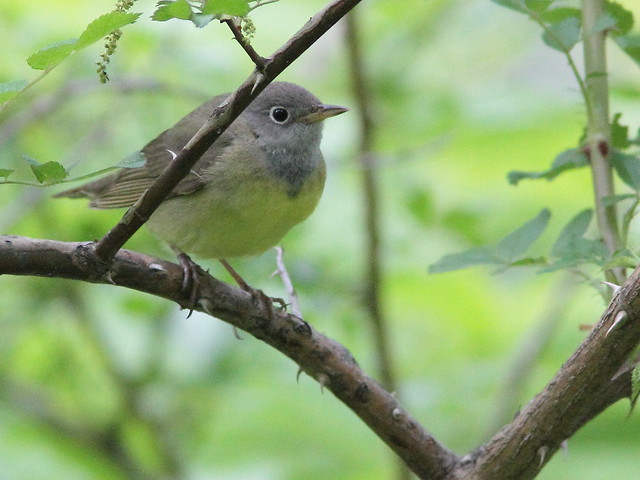
Another "first" occurred early in our stay. I was looking for a Sora in Jones Meadow Park, a small wetlands near our home. Sure enough, I saw two Soras and heard one or two others:
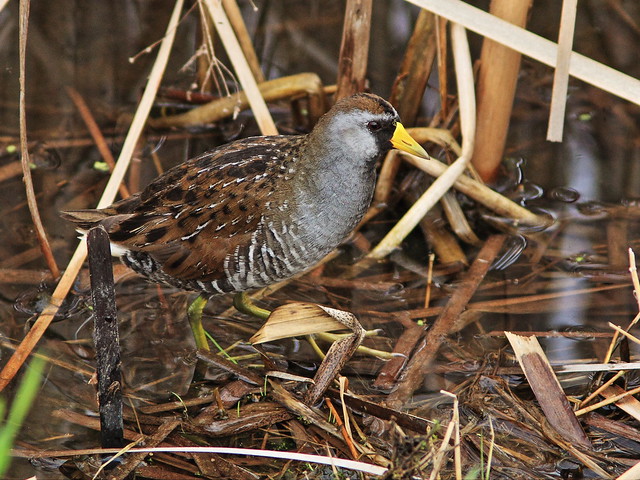
Then, a Virginia Rail started calling and suddenly strutted out at the edge of the marsh:
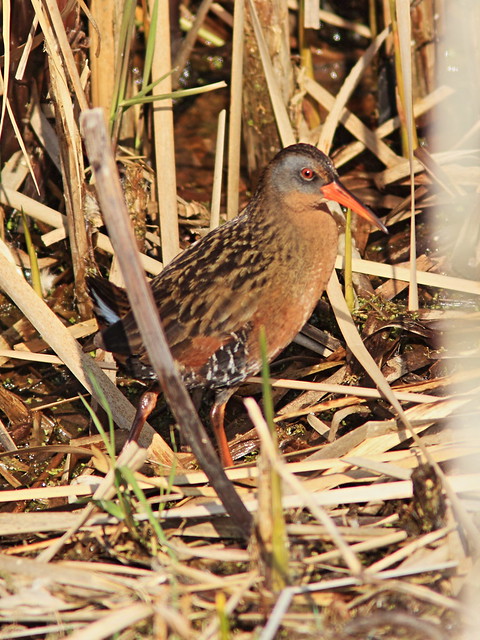
A damselfly, which I believe to be a female bluet species, allowed me a close-up shot:
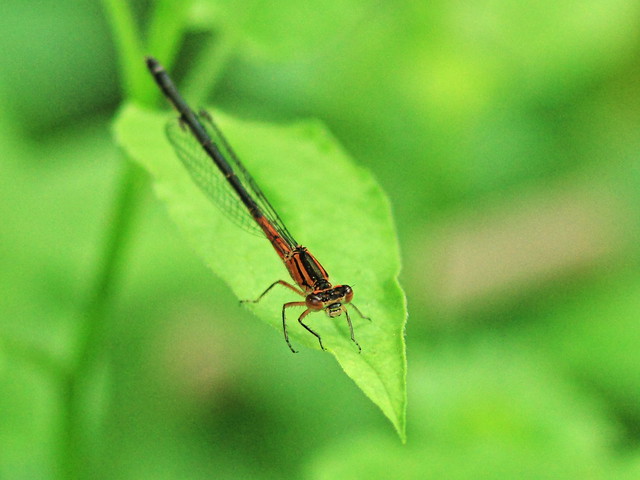


Hi Chris,
ReplyDeleteWhat a great post with these beautiful and different birds. I like here very much and geneit therefore these pictures.
Greetings, Helma